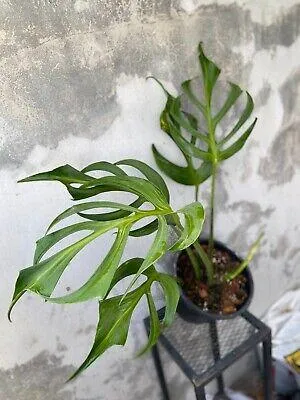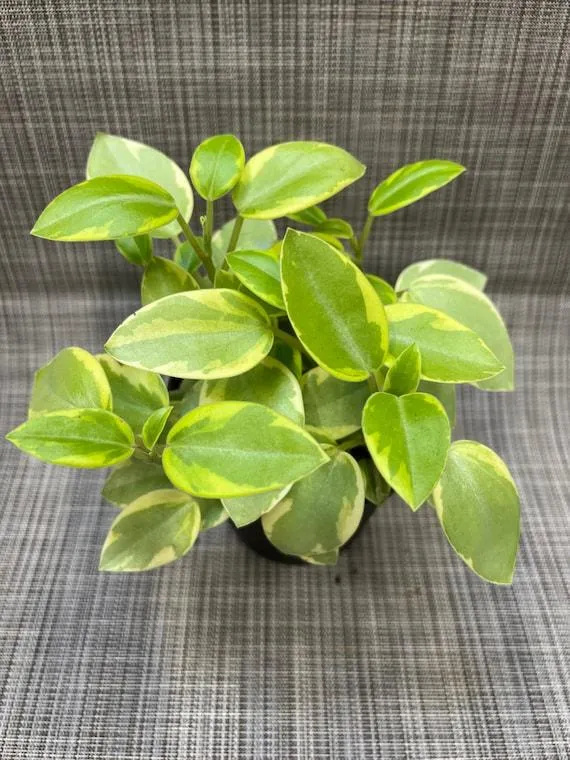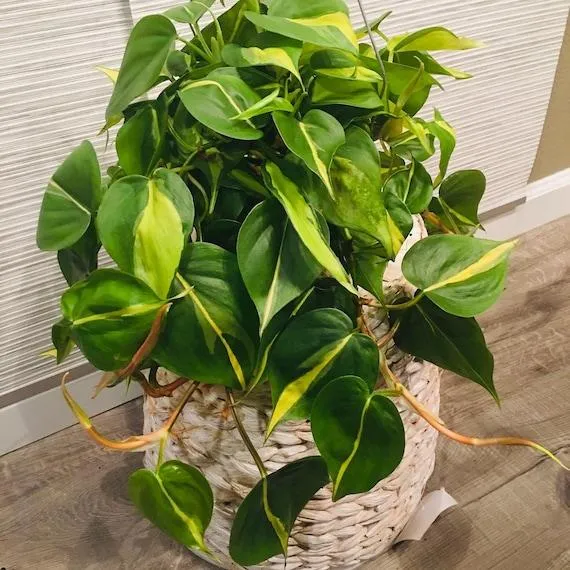Why Your Philodendron Brasil is Losing its Variegation and What to Do
If you’ve noticed the leaves on your Philodendron Brasil becoming less variegated over time, you’re not alone. This often-observed phenomenon raises some key questions for plant parents: What exactly is happening? Is anything wrong? How can variegation be maintained or restored? In this article, I’ll explore the underlying causes and offer tips based on my own experiences growing Philodendrons as well as input from plant experts.
Understanding Variegation Loss
To start, it helps to understand what variegation is. In variegated plants like the Brasil, not all chlorophyll pigment is produced in certain leaf cells. This leaves spots of lighter greenery or white against a darker green background. However, variegation is an unstable trait that plants aren’t entirely in control of. Over successive generations of growth and leaf development, there’s a tendency for the non-variegated (all-green) pattern to reassert itself.
So in many cases of variegation fading on a Brasil, the plant isn’t “losing” its variegation so much as reverting to its natural state. Still, as plant parents, it’s understandable to want to preserve and even boost those eye-catching white and yellow splotches! The good news is there are usually ways to slow or even partially reverse normal variegation loss.
Factors Affecting Variegation Expression
Several environmental and cultural factors influence how strongly variegation expresses itself in a plant over time. Let’s look at some of the key influences:

- Light levels – In general, higher light promotes more vibrant variegation. Low light conditions may cause leaves to be all-green in an attempt to maximize chlorophyll production and photosynthesis.
- Temperature – Most variegated plants like warmer conditions in the 70-80°F range. Temperatures above or below this can skew variegation patterns.
- Fertilizer – Too much nitrogen in particular can diminish variegation by encouraging dark green growth. Go light on the fertilizer, especially if leaves are looking very green.
- Plant maturity – Younger plants often show stronger variegation that may lessen as they mature. This natural process can be slowed with good care.
- Growing environment – If a plant is stressed, it may produce more all-green leaves. Ensure good light, drainage, and hygiene to support variegation.
So in summary – high light, warm temps, limited fertilizer, youthfulness, and a happy plant all favor variegation coming through strongly. Addressing these factors can help counteract the tendency towards greening over time.
Steps to Maintain/Boost Variegation
Okay, now let’s get practical! Based on my amateur plant parenting experiences, here are some tactics I’ve found can help variegation stick around:
- Prune away any fully green leaves as they appear to redirect the plant’s energy. I know, it feels mean! But variegation will thank you.
- Propagate new plants from节点 or cuttings of the most vibrantly variegated leaves/stems. This essentially “clones” those desirable traits.
- Give your plant bright, indirect light for at least 6 hours daily near a south or west-facing window. I use a grow light if the weather gets gloomy.
- Water only when the soil is dry an inch down. Overwatering can bog a plant down, color-wise.
- Every few months, repot into fresh soil with drainage and space to spread out. Tight quarters cramp variegation.
You may also consider applying a diluted liquid fertilizer high in potassium during the growing season. Some gardeners swear this perks up variegation, though research is limited. Go easy – you can always boost it later if the leaves stay green. Achieving a balance favors the plant’s long-term health and appearance.
When is a Total Reversion Possible?
In rare cases where a variegated plant has fully reverted to being all-green over several generations, it may signal a genetic disposition away from variegation has taken over. At that point, the only options are propagating from an original parent plant cutting if one is available, or starting fresh with a new variegated variety.

But basing this off a few green leaves is premature – variegation ebbs and flows. Sticking with the care tactics above usually brings about improvement gradually. And hey, a few green patches don’t mean the end of enjoyment! Your plant is still unique even if variegation lessens a bit. Focus on keeping it happy and thriving as its best, most colorful self.
Enjoy the Ride
In closing, try not to stress too much about the precise level of variegation. Variegated plants like the Philodendron Brasil are admiring partly for their unpredictability. Each new leaf holds the promise of discovery – will it be green or flecked? Over time, you’ll learn your plant’s tendencies and what growing conditions suit it best. Take pictures to document progress and shifts. And remember, like the variegated leaves themselves, no two Brasils are exactly alike. That makes them all the more special. Happy planting!
Brasil Philodendron Variegation Loss
| Cause | Appearance | Prevention |
|---|---|---|
| Lack of Light | New growth comes in solid green | Provide plant with bright, indirect light |
| Overwatering | Leaves become soggy, floppy, and variegation fades | Allow soil to dry between waterings |
| Temperature Changes | Variegation shifts or disappears when plant is exposed to cold/heat | Keep plant in consistent temperature |
| Stress from Repotting | New growth lacks variegation after being disturbed by repotting | Be gentle when repotting and minimize root disturbance |
| Inadequate Fertilizer | Variegation spots become smaller and lighter in color | Fertilize during growing season |
FAQ
-
Why is my philodendron brasil losing its variegation?
There could be a few reasons why your philodendron brasil is losing its nice white and green coloring. Often, a lack of proper light is the culprit. These plants really need lots of sunlight each day to keep their leaves distinctly variegated. If it’s not getting enough natural light, the white parts may fade over time. Other possible causes could be underwatering, overwatering, or nutrient deficiencies in the soil. The plant is basically telling you it needs some TLC!

-
Will it grow back the variegation if I improve its care?
Fortunately, there is hope that you can bring back the attractive variegation if you address what’s stressing the plant. At the same time, it’s gonna take more than just a few weeks of better care. You’ll have to be patient and stick with a healthy routine long-term. As long as the plant is still alive and you give it what it demands, the white sections should gradually become more defined again over the course of several months. Amazingly, these tough philodendron brasil can bounce back from some abuse. Just be diligent in providing optimal growing conditions from now on.
-
Is it possible for variegation to completely disappear?
On rare occasions, a philodendron brasil may totally lose its variegation if neglected for an extended time. The stresses cause the plant’s cells to lose the genetic trait that creates the white coloring. Without sunlight as the main trigger for variegation, all future growth will result in plain dark green leaves. Nevertheless, it’s not a lost cause. Under the best care, new leaves higher up the vine could possibly redevelop some modicum of variegation after quite a while. But sometimes variegation is a fleeting thing, so keep conditions suitable to maintain its natural beauty.
-
What cares do philodendron brasils need to stay variegated?
Light: Philodendron brasils demand plenty of bright, indirect sunlight throughout the day to express their colorful patterns. At minimum, a window with several hours of eastern or western exposure is best.
Water: Let the soil dry out partly between waterings, then soak the entire pot thoroughly. Overwatering can wipe out variegation rapidly.
Humidity: Mist leaves regularly or place on a pebble tray to boost ambient moisture levels. Variegation thrives in humid conditions.
Fertilizer: Feed monthly in spring and summer with a diluted liquid houseplant formula to nourish developing leaves.
Sticking to this routine should help your brasil retain its lovely variegated look for years to come! -
Is it difficult to care for a philodendron brasil?
Surprisingly, philodendron brasils are not too fickle like some other variegated plants. Their needs are pretty basic as long as you remember the main things – light, not too much water, keeping it kind of humid. Following the standard instructions for most philodendron should do the trick. You don’t have to be aplant extraordinaire to maintain the brasil’s variegation. Just pay attention and react quickly if leaves start looking pale or unhealthy. It’s certainly easier than caring for picky calathea! So don’t be intimidated – this is a plant most anyone can have success with.

-
Should I trim off leaves that have lost variegation?
That is a personal choice without a clearly right or wrong answer. You could snip off non-variegated growth if you want the plant to invest energy into developing new banded leaves instead. However, removing leaves also takes away from the plant’s ability to photosynthesize so it may stall growth. Overall the plant’s health is what matters most. If conditions are optimized, new foliage produced should come back variegated over time without cutting. I would just let it be and focus on addressing the underlying triggers that diminished patterning in the first place.
